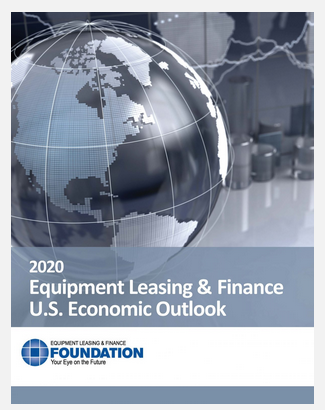Equipment Leasing & Finance U.S. Economic Outlook forecasts improvement in Q3
Manufacturing suffered in March and April but showed signs of improvement in May.
 Q3 Update to 2020 Economic Outlook Forecasts Improvement In Equipment and Software Investment and U.S. Economic Growth As Businesses Reopen
Q3 Update to 2020 Economic Outlook Forecasts Improvement In Equipment and Software Investment and U.S. Economic Growth As Businesses Reopen
After severe declines in equipment and software investment in Q1 and Q2 due to the effects of COVID-19 and the impact of social distancing measures on the U.S. economy, investment in equipment and software is projected to improve relative to the first half of the year as businesses reopen. With substantial uncertainty owing to the pandemic, equipment and software investment growth is forecast to between -5.6 and -9.6 percent.
With GDP growth measured relative to the prior quarter, unless Q3 involves an extended nationwide economic shutdown, positive growth for the U.S. economy is highly likely in the second half of the year, with an annual growth rate forecast to between -4.0 percent and -7.3 percent according to the Q3 update to the 2020 Equipment Leasing & Finance U.S. Economic Outlook released today by the Equipment Leasing & Finance Foundation.
Scott Thacker, Foundation Chair and Chief Executive Officer of Ivory Consulting Corporation, said, “This update to the U.S. Economic Outlook illustrates the wide-ranging impacts that COVID-19 has had on equipment and software investment as well as on broader economic factors, including credit, the small business outlook, consumer finances, and business financial stress.
"The pandemic stalled business investment in the first half of 2020 and the near-term outlook for most equipment verticals is bleak. Computer and manufacturing investment may be the rare bright spots in the latter half of the year as manufacturers and businesses create ways to safely open.”
Highlights from the Q3 update include:
- Equipment and software investment contracted 10.5 percent annualized in Q1 2020, the sharpest decline since the Great Recession. Although investment growth is likely to remain weak by historical standards in most sectors over the next three to six months, some verticals, including computers, could see stronger demand.
- The U.S. economy contracted 5 percent annualized in Q1 and is expected to shrink by 25-35 percent annualized in Q2. While the worst of the downturn appears to be over due in large part to an unprecedented level of federal assistance, a full economic recovery is unlikely until 2021 at the earliest.
- The manufacturing sector suffered in March and April based on various measures of activity, but showed signs of improvement in May as new orders, shipments, and the ISM manufacturing index all rose.
- Stimulus efforts have helped forestall a wave of Main Street bankruptcies, but new virus flare-ups are disrupting some reopening efforts, further stressing many small businesses.
- The Federal Reserve has implemented historic measures to boost liquidity in financial markets. The federal funds rate remains at its zero-lower bound, the Fed’s balance sheet has expanded by $3 trillion and the Fed has implemented a new program to backstop loans to nonfinancial firms, all of which will ensure ultra-low interest rates for the foreseeable future.
Learn more at www.leasefoundation.org/industry-resources/u-s-economic-outlook/
















